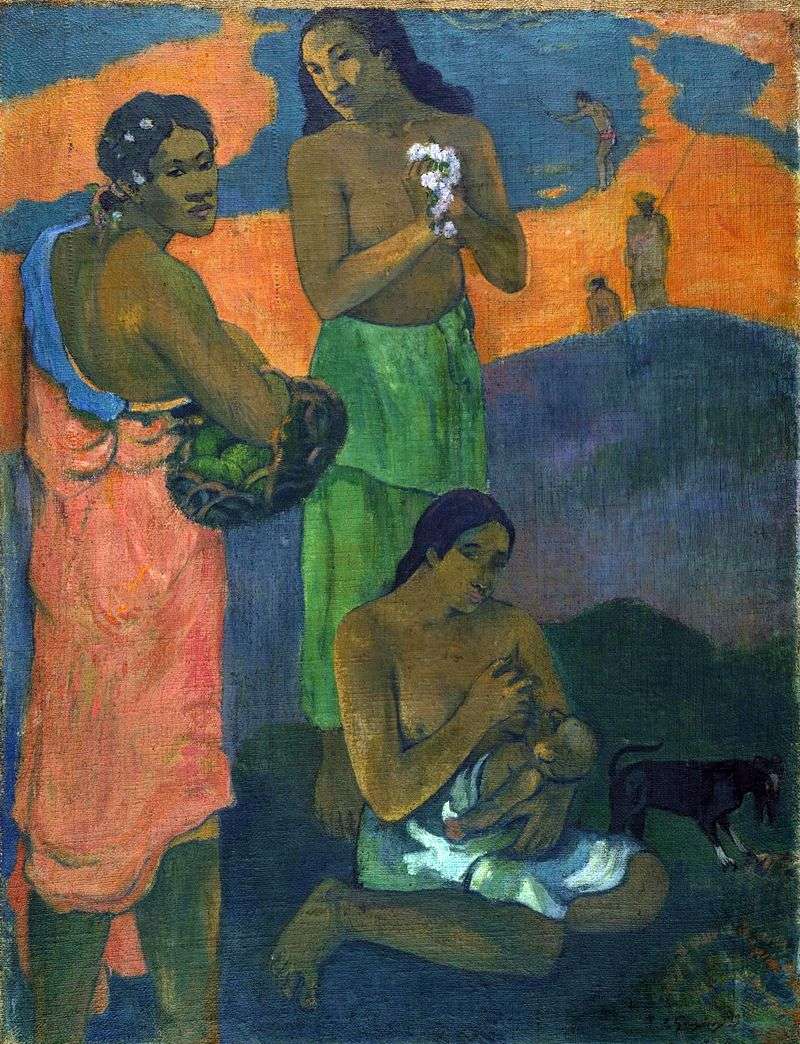
In March 1899, Pakhura gave birth to a son whom Gauguin called Emil. With this event Danielsson and several other researchers related the appearance of two paintings. Following Wildenstein, they are usually referred to as “Motherhood I” and “Motherhood II”.
The second canvas is more bright and decorative, as well as the lack of a dog and characters of the distant plan. The Hermitage composition was part of a collection of ten canvases sent by the artist Vollard in January 1900 with the following description: “8) Three figures: in the foreground a seated woman is breastfeeding a child. \” To the right is a small black dog. \ “A woman standing in a red dress with a basket. in a green dress holding flowers. The background is blue lagoons and orange-red sand. “
Creating a picture of “Women on the shore of the sea,” Gauguin combined real observations, the iconography of the scenes of the worship of the infant of old masters and the compositional techniques of Puuv de Chavannes. At the same time, working on the picture, the artist recalled his own characters from the “Three Tahitians”. The figure of a woman with flowers, standing in the center, is one of the most enduring images of Gauguin’s painting of that period. She is. in particular, appears in the painting “The Month of Mary” and other works.
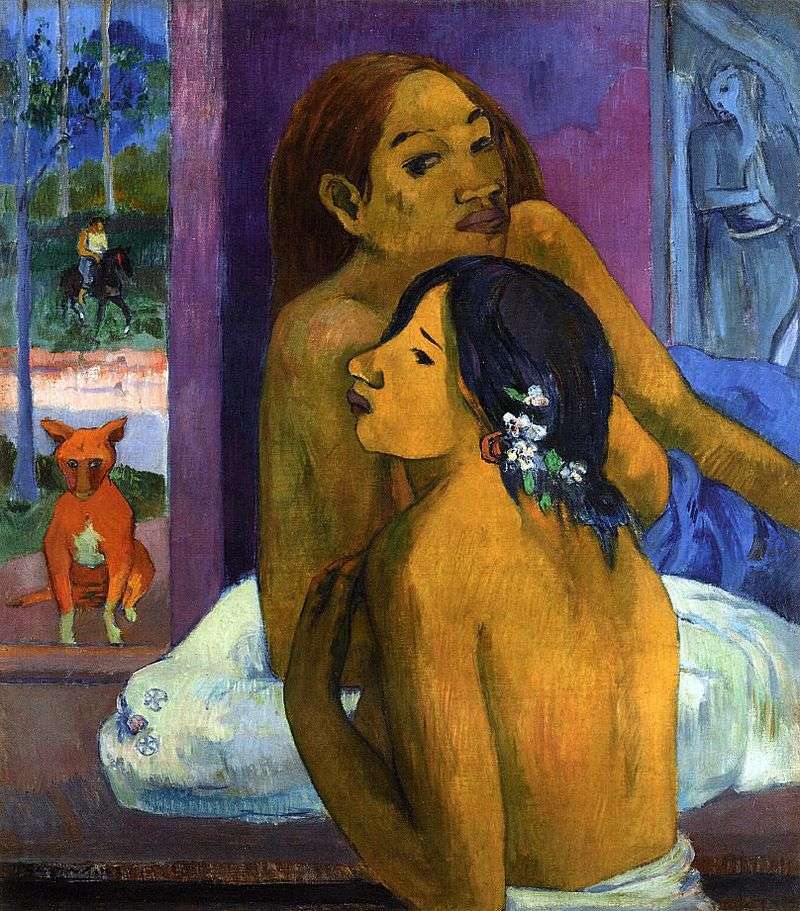 Two women (Flowers in hair) by Paul Gauguin
Two women (Flowers in hair) by Paul Gauguin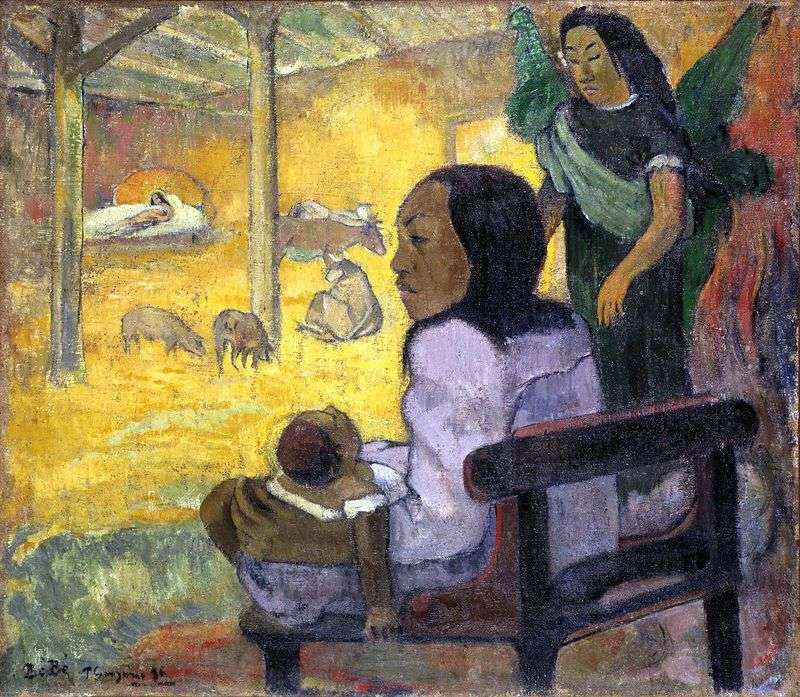 Child (Christmas) by Paul Gauguin
Child (Christmas) by Paul Gauguin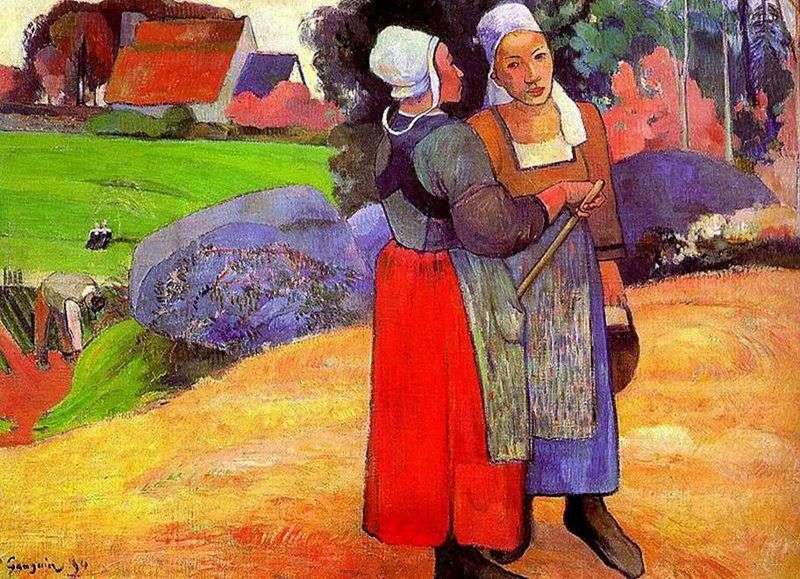 Breton peasant women by Paul Gauguin
Breton peasant women by Paul Gauguin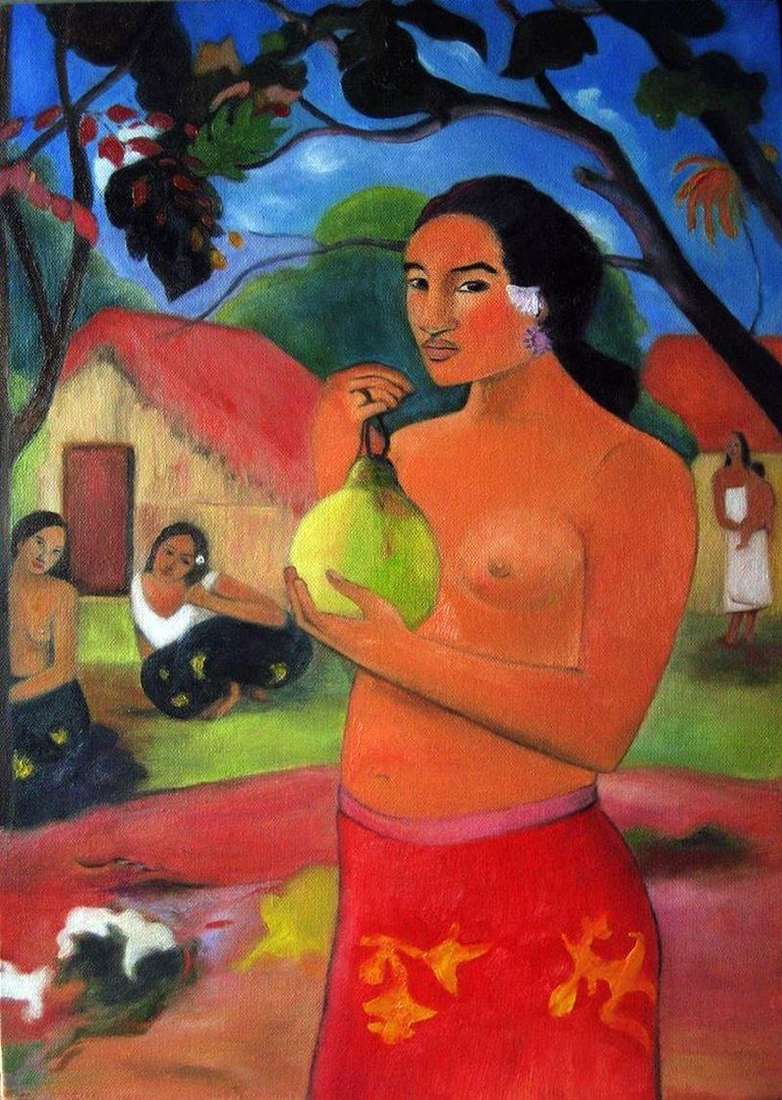 Woman holding the fruit by Paul Gauguin
Woman holding the fruit by Paul Gauguin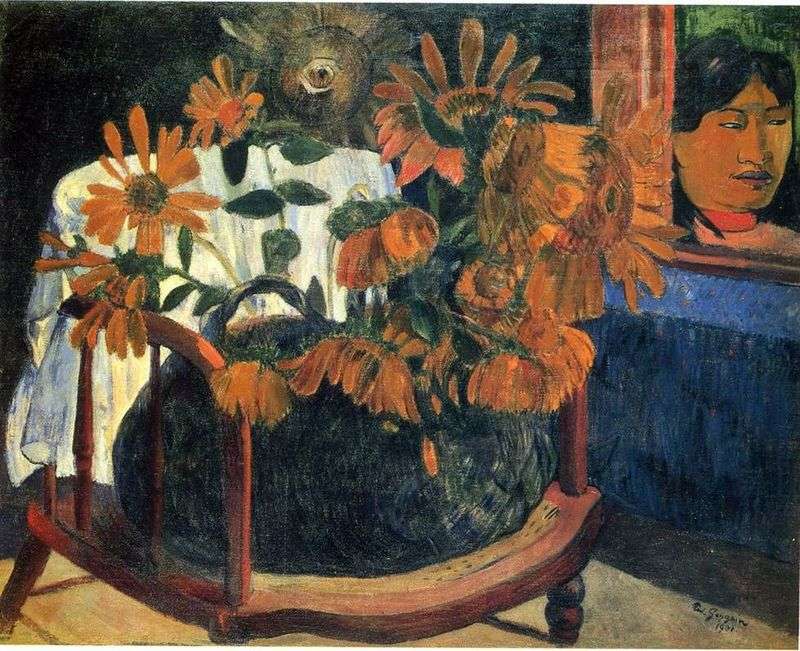 Still Life with Sunflowers on the Chair by Paul Gauguin
Still Life with Sunflowers on the Chair by Paul Gauguin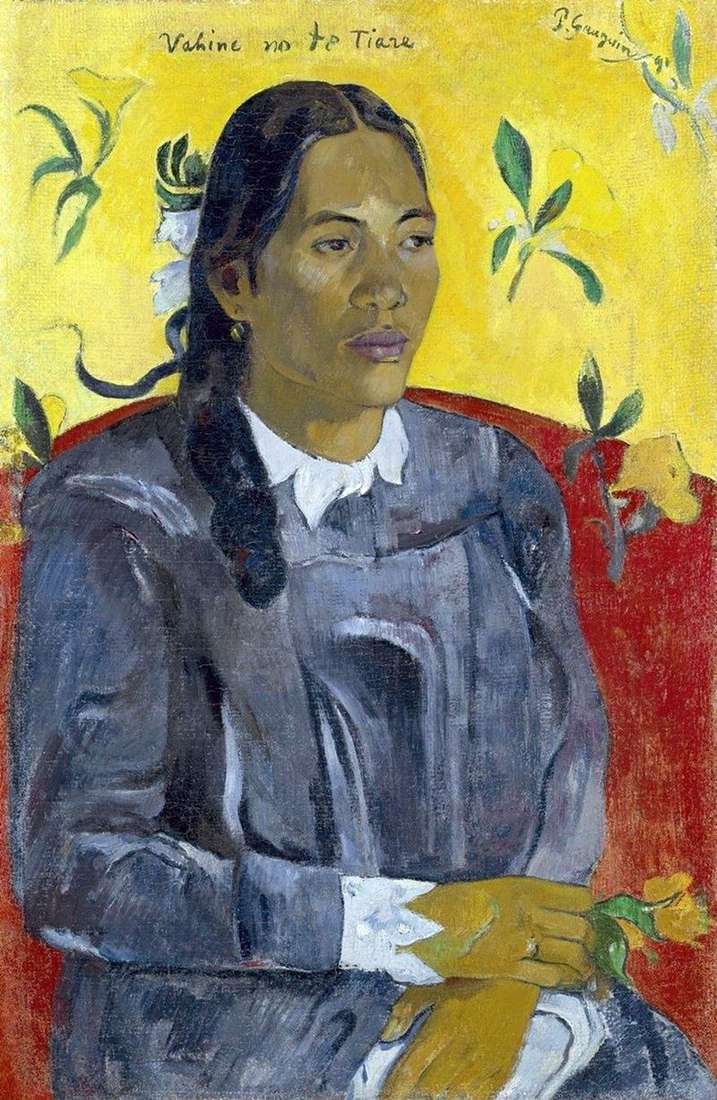 Woman with flower by Paul Gauguin
Woman with flower by Paul Gauguin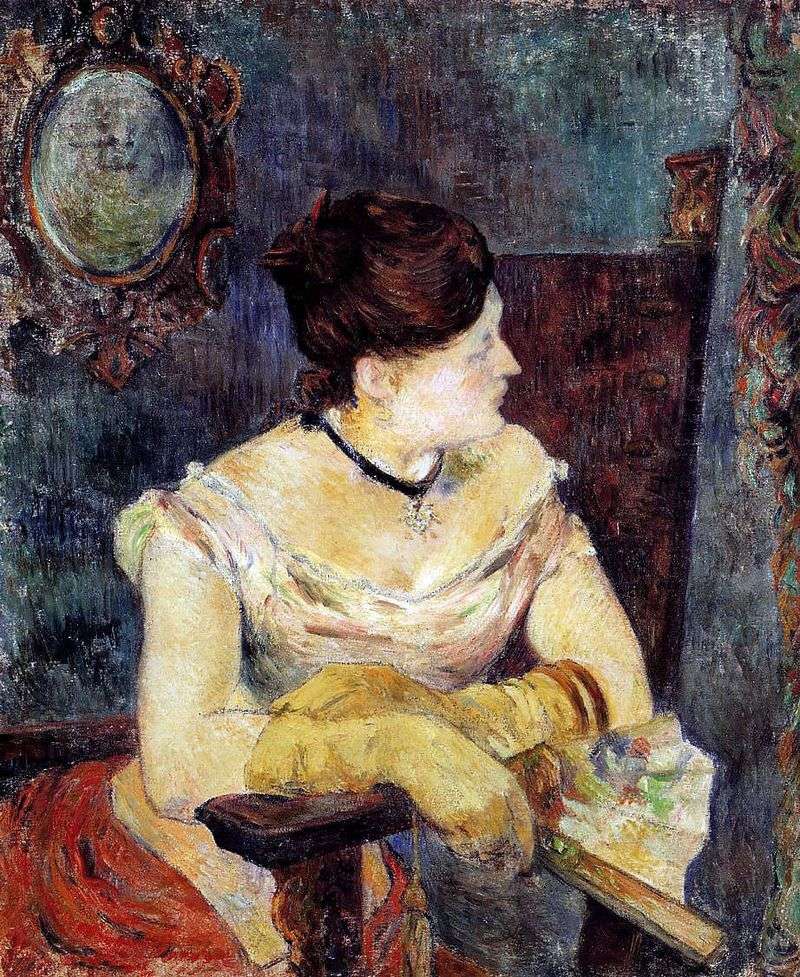 Mette Gauguin in an evening gown by Paul Gauguin
Mette Gauguin in an evening gown by Paul Gauguin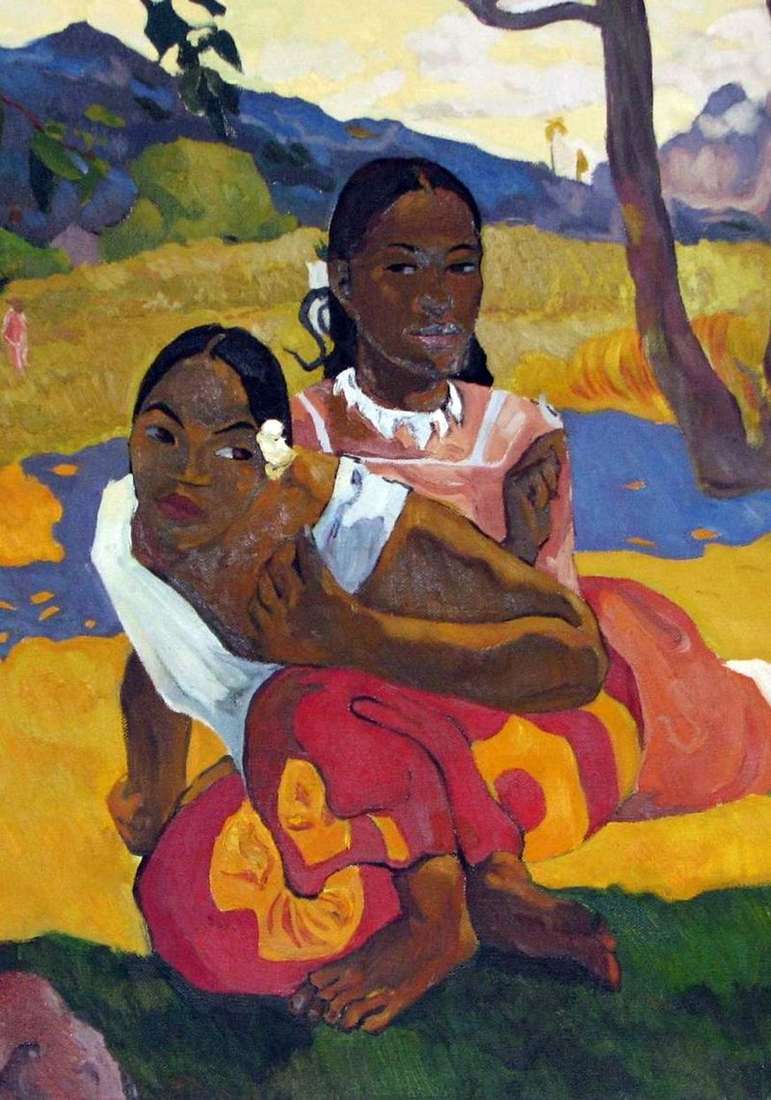 When you get married by Paul Gauguin
When you get married by Paul Gauguin